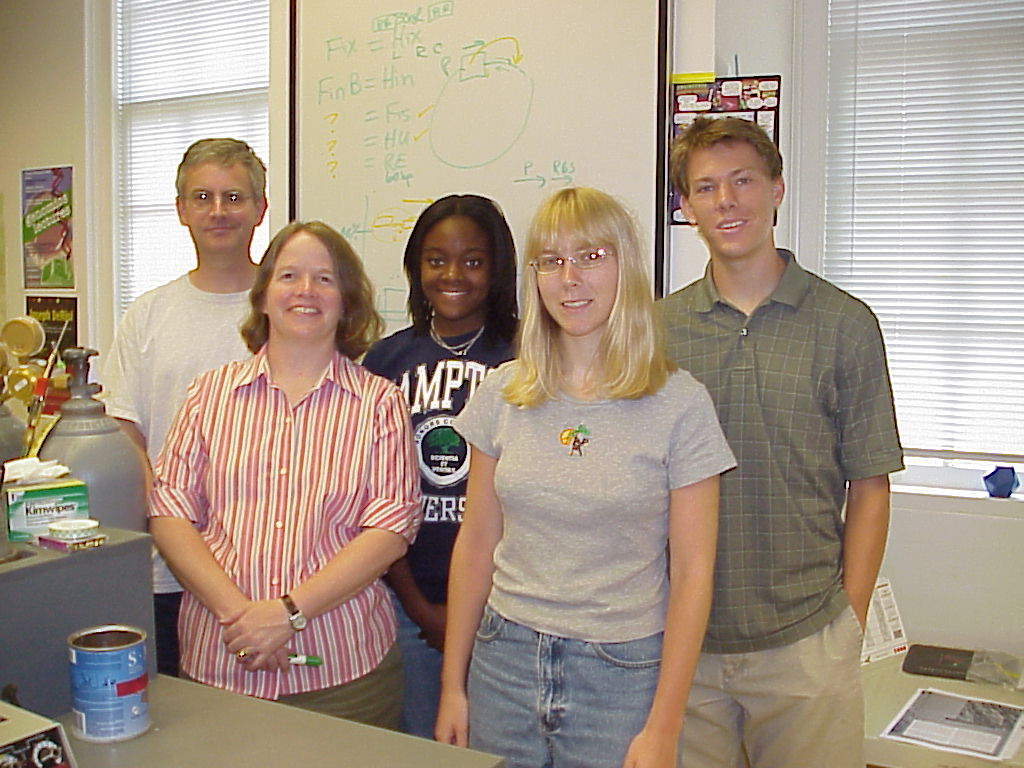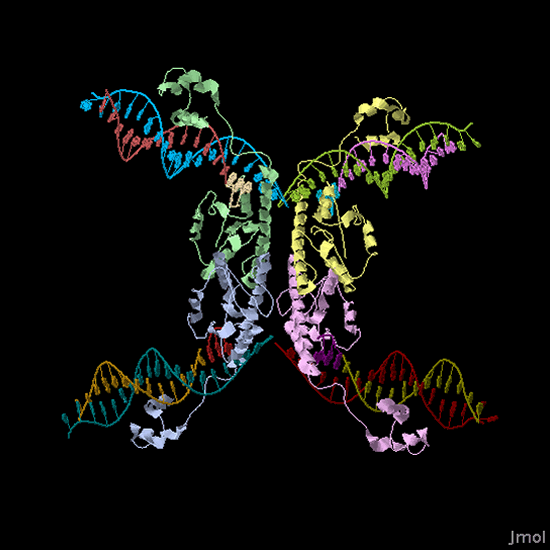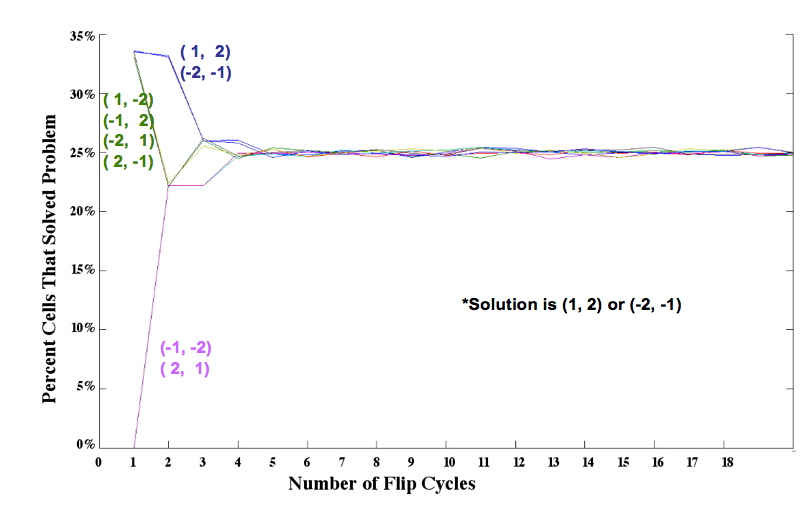Davidson 2006
From 2006.igem.org
| Line 31: | Line 31: | ||
|- | |- | ||
| - | |[[Image:two_pancake_families.jpg|thumb|250px|right|Simulation results for two pancakes, useful for calibrating kinetics of pancake flipping. ]]''' | + | |[[Image:two_pancake_families.jpg|thumb|250px|right|Simulation results for two pancakes, useful for calibrating kinetics of pancake flipping. ]]'''Mathematical model''': Our mathematical representation of a stack of pancakes is a '''signed permutation''', in which each numerical value represents the pancake size and the sign of the number represents the orientation. For example, (1, 2, 3, 4) is a sorted stack of four pancakes, all in the proper order and orientation, and (-2, 4, -1, 3) is the scrambled stack of four pancakes shown in Figure 1. Note that pancakes 1 and 2 are negative, indicating that these two pancakes are in the wrong orientation (burnt side up). |
| + | |||
| + | We simulated the flipping process by assuming that each segment of DNA flanked by Hix sites is equally likely to be flipped by Hin invertase. In an ''n''-pancake stack, there are <math> \binom{n+1}{2} </math> ways to choose a segment: two spatula locations must be chosen from among the ''n'' + 1 potential locations. For example, there are <math> \binom{5}{2} = \frac{5!}{3! 2!} = 10 </math> different ways to perform a single flip in a stack of 4 pancakes. | ||
| + | |||
| + | The random flipping process continues until the stack is sorted in the correct order and orientation, or until we artificially stop the random flipping process.A population of E. coli cells (10<sup>15</sup> cells, for instance) each carrying ~100 copies of pancake stacks has astounding parallel processing capacity. | ||
<font color='red'>Lance, please work on this section.</font color> | <font color='red'>Lance, please work on this section.</font color> | ||
Revision as of 02:24, 29 October 2006
 Project Overview [http://partsregistry.org/cgi/partsdb/pgroup.cgi?pgroup=iGEM2006partsregistry.org/cgi/partsdb/pgroup.cgi?pgroup=iGEM2006&group=Davidson Davidson Parts] Team Members Tools and Resources Check out our [http://www.bio.davidson.edu/courses/synthetic/photos/FlapJack_HotCakes.html Official Team Photo] |
Our goal is to genetically engineer a biological system that can compute solutions to a puzzle called the burnt pancake problem. The EHOP computer is a proof of concept for computing in vivo, with implications for future data storage devices and transgenic systems. Our work was done in collaboration with the [http://2006.igem.org/wiki/index.php/Missouri_Western_State_University_2006 Missouri Western iGEM Team] and an undergraduate research fellow from [http://www.hamptonu.edu/ Hampton University].
The Burnt Pancake Problem
The [http://en.wikipedia.org/wiki/Pancake_sorting pancake problem] is a puzzle in which a scrambled series of units (or stack of pancakes) must be shuffled into the correct order and orientation. You can try solving [http://www.cut-the-knot.org/SimpleGames/Flipper.shtml a simple version of the pancake problem] yourself.
| In the burnt pancake problem, each pancake is given an orientation by burning one side. Figure 1 shows a scrambled stack of burnt pancakes. To solve the problem, every unit, or pancake, must be placed in the proper order (largest on bottom, smallest on top) and in the proper orientation (burnt side down, golden side up). The pancakes are flipped with two spatulas: one to lift pancakes off the top of the stack, the other to flip part (or all) of the remaining stack of pancakes. The pancakes lifted by the first spatula are returned to the top of the stack without being flipped. You can watch Media:burnt_pancake.ogg a movie of the stack in Figure 1 being sorted to see how the puzzle is solved.
Building the Biological System
TEAM MEMBERS
Faculty
TOOLS AND RESOURCES
White Board Biology Tools (Wet Bench)
Math Tools
Bio-Math Tools
Assembly Plans Progress |




